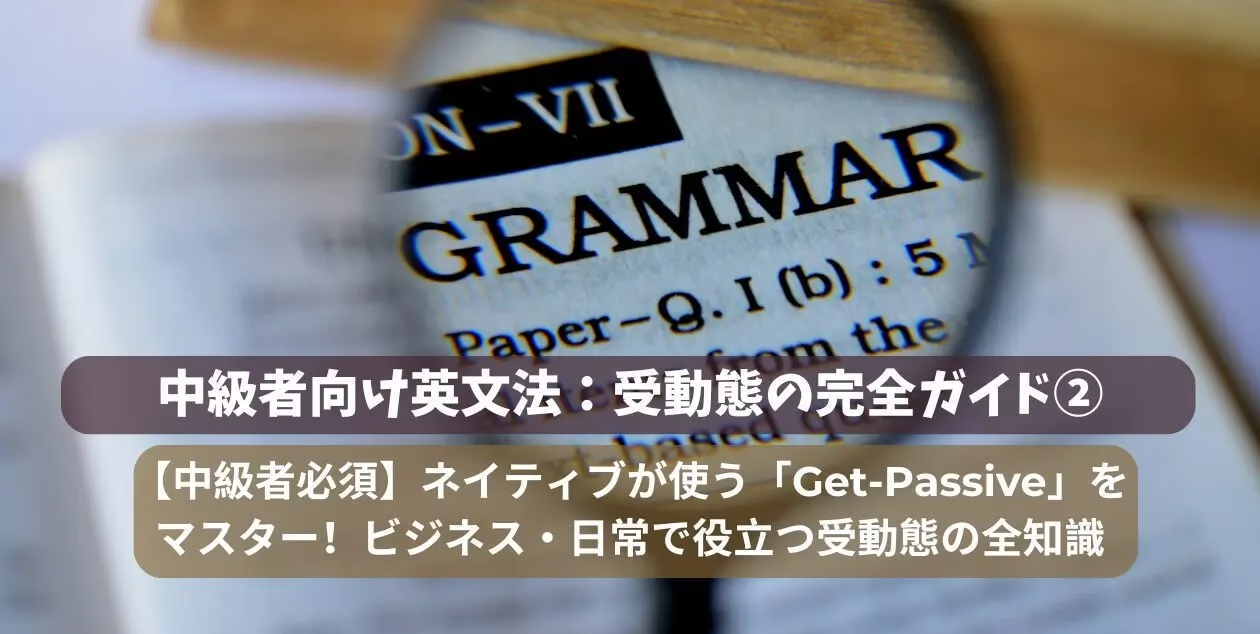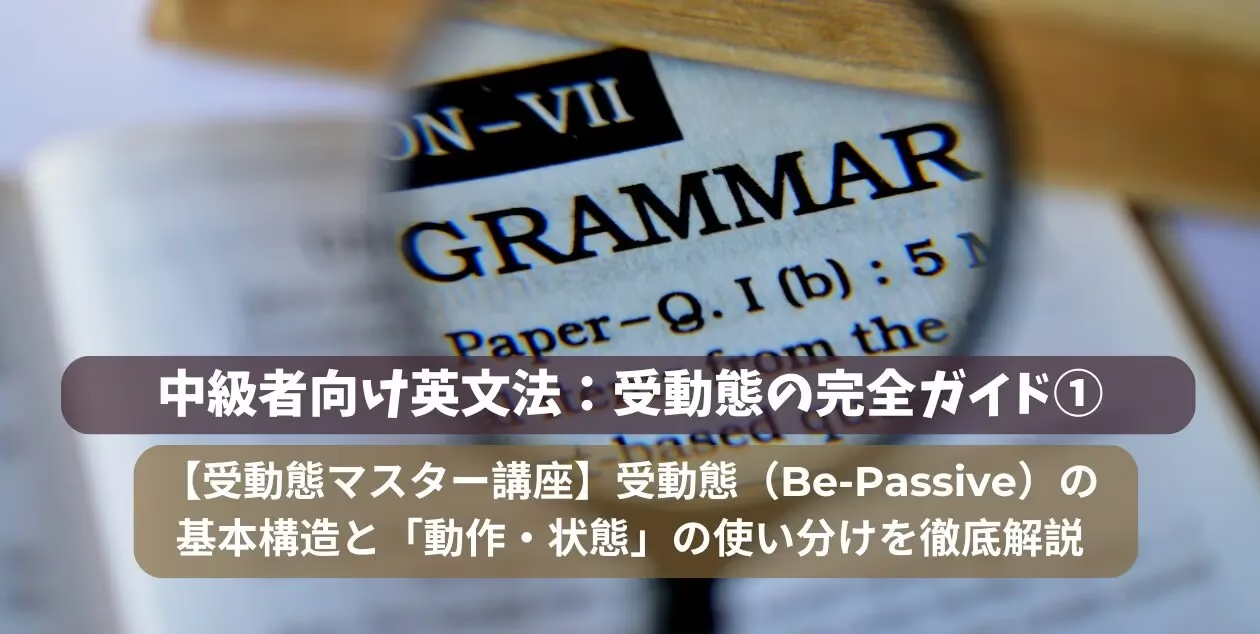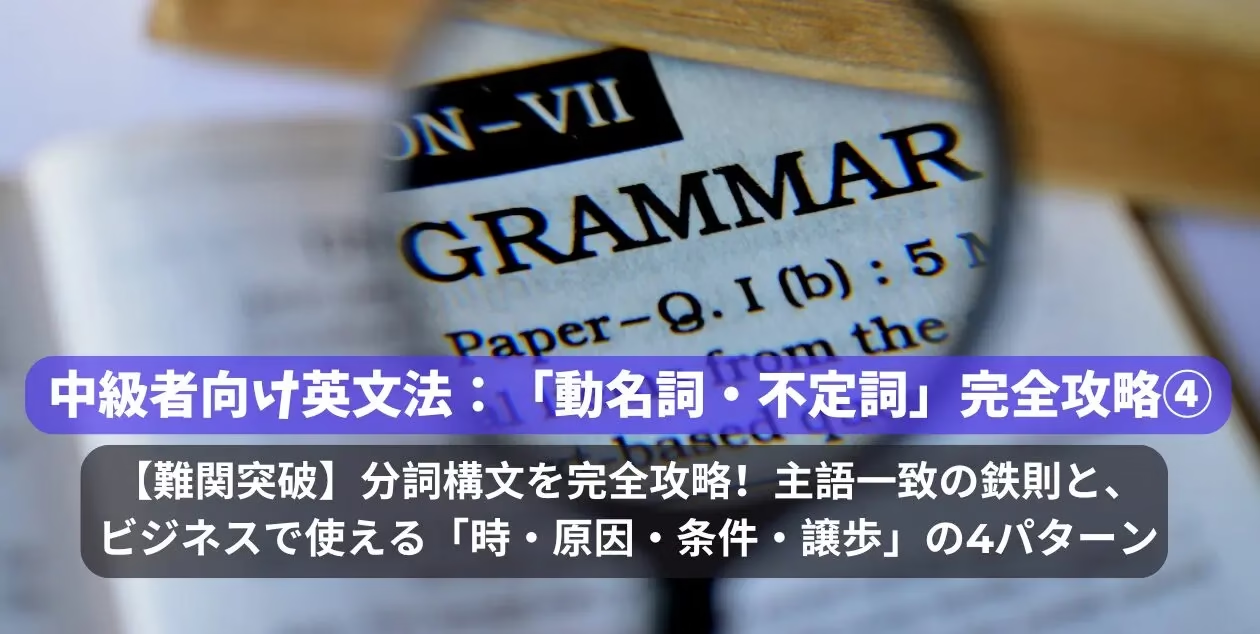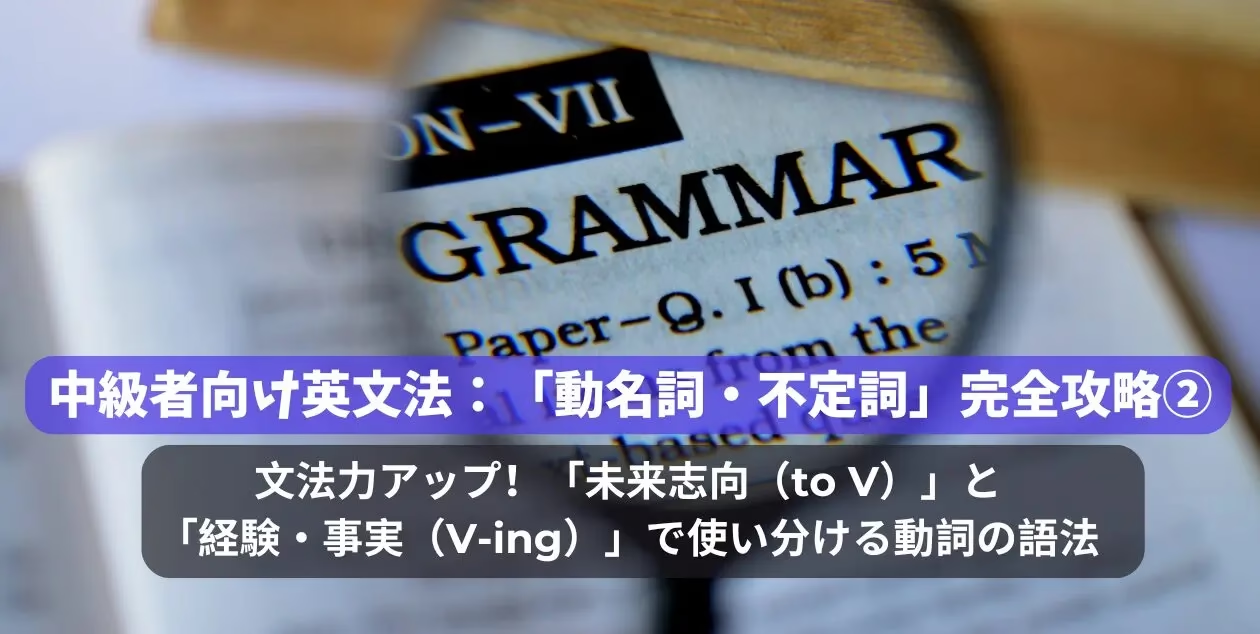映画について英語で話せるようになりたいと思ったことはありませんか?グローバル化が進む今日、英語で映画の感想を述べたり、映画館や配信サービスについて会話したりする機会が増えています。本記事では、映画を楽しむために必要な英語表現を網羅的に解説します。映画館での体験から最新の配信サービスまで、実際の会話例を交えながら、あなたの英語力を一段階アップさせる表現をマスターしましょう。
1. 映画館に関する英語表現
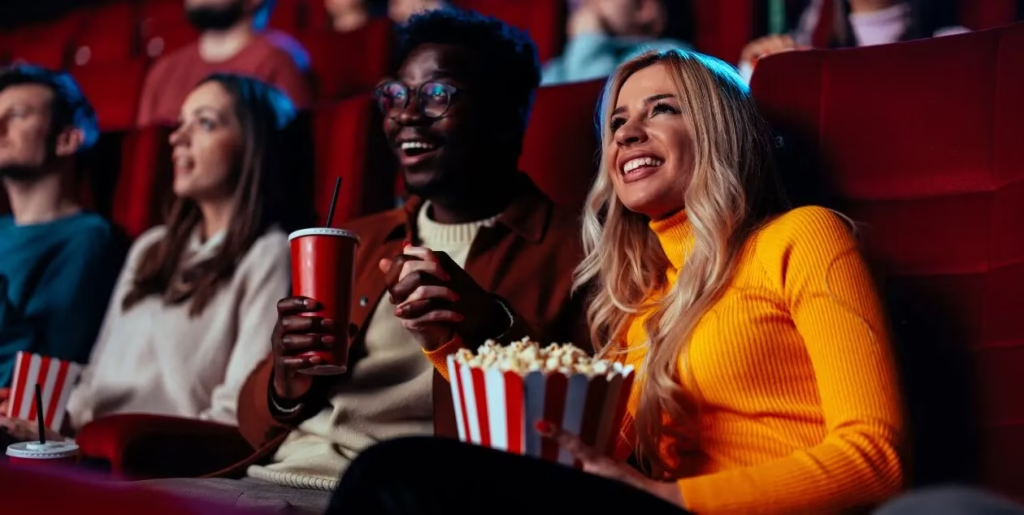
映画館で映画を楽しむ体験は、世界共通の文化です。まずは映画館に関する基本的な英語表現を見ていきましょう。
cinema / movie theater(映画館)
解説: 映画を大きなスクリーンで観るための施設です。アメリカ英語では「movie theater」、イギリス英語では「cinema」が一般的です。
例文: I watched Oppenheimer at the IMAX cinema in Shinjuku, and the sound was incredible.
和訳: 新宿のIMAX映画館で『オッペンハイマー』を観たけど、音響が本当にすごかった。
ticket / box office(チケット/窓口)
解説: 映画館で映画を観るための入場券や販売所です。「box office」は劇場のチケット売り場を指します。
例文: I bought tickets for Godzilla Minus One at the box office of Toho Cinemas.
和訳: TOHOシネマズの窓口で『ゴジラ-1.0』のチケットを買いました。
matinee / late show(昼間の上映/レイトショー)
解説: 「matinee」は昼間の上映、「late show」は夜遅い時間の上映を指します。料金や混雑状況が異なることもあります。
例文: We went to a matinee showing of Wonka because the tickets were cheaper in the afternoon.
和訳: 午後はチケットが安かったので、『ウォンカ』の昼間の上映を観に行きました。
double feature(二本立て上映)
解説: 映画館で2本の映画を続けて上映することです。昔ながらの映画館で見られるスタイルです。
例文: Last summer, the cinema had a double feature of Jurassic Park and Back to the Future.
和訳: 去年の夏、その映画館では『ジュラシック・パーク』と『バック・トゥ・ザ・フューチャー』の二本立て上映がありました。
release / premiere(公開/初公開)
解説: 映画や番組が初めて上映・配信されることです。「release」は一般的な公開、「premiere」は初公開や初上映の意味です。
例文: Dune: Part Two had its world premiere at the Venice Film Festival.
和訳: 『デューン:パート2』はヴェネツィア映画祭でワールドプレミア上映されました。
2. 配信サービスに関する英語表現

近年、映画の楽しみ方は映画館だけでなく、配信サービスへと広がっています。この分野の英語表現をマスターしましょう。
streaming service / streaming platform(配信サービス)
解説: インターネット経由で映画やドラマを視聴できるサービスです。NetflixやHulu、Disney+などが有名です。
例文: I usually use Netflix as my main streaming service to watch new movies and TV shows.
和訳: 私は新作映画やドラマを観るのに、主にNetflixという配信サービスを使っています。
subscription(サブスクリプション/定額契約)
解説: 月額や年額で配信サービスを利用する契約です。NetflixやDisney+などで一般的です。
例文: I pay for a monthly subscription to Disney+ so I can watch all the Marvel movies.
和訳: マーベル映画を全部観るために、Disney+の月額サブスクリプションに加入しています。
free trial(無料体験)
解説: 一定期間無料で配信サービスを試せる仕組みです。新規ユーザー向けの特典です。
例文: I signed up for a free trial of Amazon Prime Video to watch The Boys.
和訳: 『ザ・ボーイズ』を観るために、Amazonプライム・ビデオの無料体験に申し込みました。
watch list / queue(視聴リスト/キュー)
解説: あとで観たい作品を登録しておくリストです。配信サービスでよく使われる機能です。
例文: I added Barbie to my Netflix watch list so I won’t forget to watch it later.
和訳: Netflixの視聴リストに『バービー』を追加して、後で観るのを忘れないようにしています。
on demand(オンデマンド)
解説: 自分の好きなタイミングで映画や番組を視聴できる仕組みです。配信サービスの特徴的な機能です。
例文: Most movies are now available on demand, so you can watch them whenever you want.
和訳: 今ではほとんどの映画がオンデマンドで観られるので、好きな時に視聴できます。
3. 視聴方法に関する英語表現

映画の視聴方法は多様化しています。その視聴体験を英語で表現できるようになりましょう。
binge-watch(一気見する)
解説: シリーズや複数のエピソードを続けて一度に観ることです。配信サービスの普及で一般的になった表現です。
例文: Last weekend, I binge-watched the entire season of Stranger Things on Netflix.
和訳: 先週末はNetflixで『ストレンジャー・シングス』のシーズンを全部一気見しました。
subtitles(字幕)
解説: 画面下に表示される翻訳や台詞の文字です。外国語映画や英語学習にも便利です。
例文: I watched Parasite with English subtitles because I don’t understand Korean.
和訳: 韓国語が分からないので、『パラサイト』は英語字幕で観ました。
dubbed / dubbing(吹き替え)
解説: オリジナル音声を他の言語に差し替えたバージョンです。子ども向けや外国映画でよく利用されます。
例文: The animated film Frozen was dubbed into Japanese for its release in Japan.
和訳: アニメ映画『アナと雪の女王』は、日本公開のために日本語吹き替え版が作られました。
original version / original audio(オリジナル音声/原語版)
解説: 元の言語のままの映画や番組です。俳優の本来の声や演技を楽しみたい人に人気です。
例文: I prefer watching movies in the original version because I want to hear the actors’ real voices.
和訳: 俳優の本当の声を聞きたいので、映画はオリジナル音声で観るのが好きです。
HD / 4K / Ultra HD(高画質)
解説: 高解像度の映像品質です。4KやUltra HDは最新の高画質規格です。
例文: The new Avatar movie is available in 4K Ultra HD on Disney+.
和訳: 新作『アバター』はDisney+で4KウルトラHD画質で観られます。
pause / rewind / fast-forward(一時停止/巻き戻し/早送り)
解説: 配信や録画で視聴中に使う基本操作です。自分のペースで視聴できるのが特徴です。
例文: I paused the movie to answer the phone and rewound the scene to watch it again.
和訳: 電話に出るために映画を一時停止して、そのシーンをもう一度観るために巻き戻しました。
rental / rent(レンタル/貸し出し)
解説: 一定期間だけ映画や番組を視聴できるサービスです。オンラインでも利用可能です。
例文: I rented Oppenheimer online for 48 hours through Amazon Prime Video.
和訳: Amazonプライム・ビデオで『オッペンハイマー』をオンラインレンタルして、48時間観られました。
screen / display / device(画面/ディスプレイ/デバイス)
解説: 映画や番組を観るための機器(テレビ、スマホ、タブレットなど)です。
例文: You can watch movies on any device, like your smartphone, tablet, or TV.
和訳: 映画はスマートフォンやブレット、テレビなど、どんなデバイスでも観ることができます。
audio description(音声解説)
解説: 視覚障がい者向けに映像内容を説明する音声です。多くの配信サービスで対応しています。
例文: The Lion King offers audio description for visually impaired viewers on Disney+.
和訳: 『ライオン・キング』はDisney+で視覚障がい者向けの音声解説付きで提供されています。
parental controls(ペアレンタルコントロール/視聴制限)
解説: 子どもの視聴を制限・管理する機能です。安全な視聴環境を作るために使います。
例文: I set up parental controls on Netflix so my kids can only watch age-appropriate shows.
和訳: 子どもが年齢に合った番組だけ観られるように、Netflixでペアレンタルコントロールを設定しました。
4. 映画体験を語る会話例
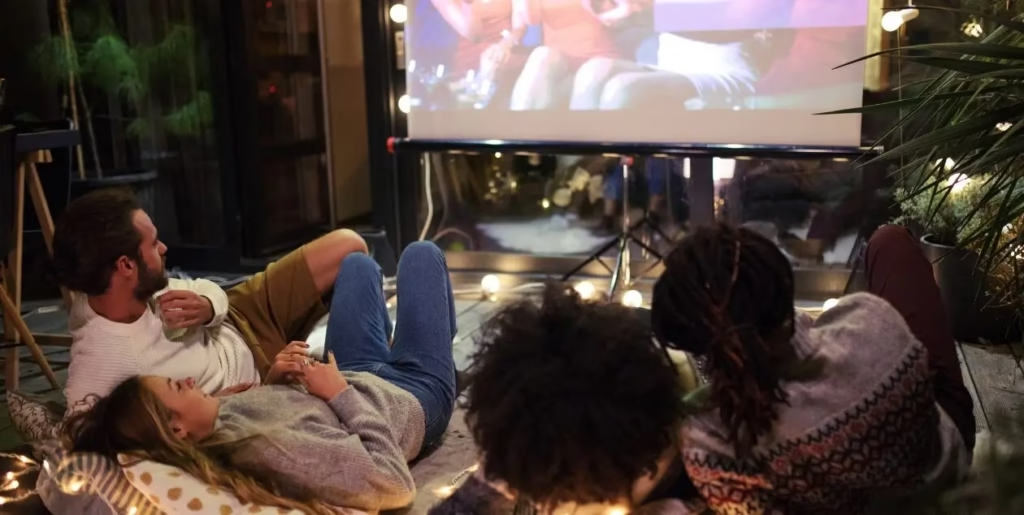
これまでに学んだ表現を実際の会話で使ってみましょう。以下は友人同士が映画の視聴体験について話している例です。
映画館と配信サービスについての会話
A: Have you been to the cinema lately?
(最近映画館に行った?)
B: Yeah, I went to the IMAX cinema in Shinjuku to watch Oppenheimer. The sound was incredible!
(うん、新宿のIMAX映画館で『オッペンハイマー』を観たよ。音響が本当にすごかった!)
A: Nice! I usually watch movies on streaming services like Netflix or Disney+ these days.
(いいね!最近はNetflixやDisney+みたいな配信サービスで映画を観ることが多いな。)
B: Same here. Last weekend, I binge-watched the new season of Stranger Things. I love that you can watch everything on demand.
(私も。先週末は『ストレンジャー・シングス』の新シーズンを一気見したよ。オンデマンドで全部観られるのが最高だよね。)
A: Do you watch with subtitles or dubbed audio?
(字幕で観る?それとも吹き替え?)
B: I prefer the original version with English subtitles. I want to hear the actors’ real voices.
(オリジナル音声で英語字幕派だな。俳優の本当の声を聞きたいから。)
A: Same! By the way, did you see Dune: Part Two is getting its world premiere next month?
(同じく!ところで、『デューン:パート2』が来月ワールドプレミアされるって知ってた?)
B: Yeah, I can’t wait! I already added it to my watch list on HBO Max.
(知ってる!もうHBO Maxの視聴リストに追加してあるよ。)
A: I love how most new movies are available in 4K Ultra HD now. The picture quality is amazing on my TV.
(最近はほとんどの新作映画が4KウルトラHDで観られるのが嬉しい。テレビの画質がすごいよね。)
B: Totally. And if I need to take a break, I just pause the movie and come back later.
(本当だよね。途中で休憩したい時も、一時停止して後でまた観られるし。)
A: Sometimes I rent movies online, like Godzilla Minus One on Amazon Prime Video. It’s convenient because you have 48 hours to watch.
(たまにAmazonプライム・ビデオで『ゴジラ-1.0』みたいな映画をレンタルすることもあるよ。48時間観られるから便利だよね。)
B: Yeah, and you can watch on any device—phone, tablet, or TV.
(そうそう、スマホでもタブレットでもテレビでも観られるし。)
A: Have you ever tried audio description? My friend who’s visually impaired says it’s really helpful.
(音声解説って使ったことある?視覚障がいの友達がすごく助かるって言ってた。)
B: Not yet, but it’s great that streaming services offer that now. I also set up parental controls for my little sister so she can only watch age-appropriate shows.
(まだ使ったことないけど、今は配信サービスでも対応してるのがいいよね。妹のためにペアレンタルコントロールも設定してるよ。)
A: By the way, do you ever go to matinee shows? The tickets are cheaper in the afternoon.
(そういえば、昼間の上映に行くことある?午後はチケットが安いんだよ。)
B: Sometimes! Last month, the cinema had a double feature of Jurassic Park and Back to the Future. It was awesome!
(たまに行くよ!先月は映画館で『ジュラシック・パーク』と『バック・トゥ・ザ・フューチャー』の二本立て上映があって、最高だった!)
5. 映画館派vs自宅視聴派の議論

映画の楽しみ方は人それぞれです。映画館派と自宅視聴派の議論を紹介します。
映画館派と自宅ビデオ派の対話
A (映画館派): I still think nothing beats watching a movie at the cinema. The huge screen, surround sound, and the whole atmosphere make it so special.
(やっぱり映画は映画館で観るのが一番だと思うな。大きなスクリーンやサラウンド音響、あの雰囲気が特別なんだよ。)
B (自宅ビデオ派): I get that, but honestly, I prefer watching movies at home. With streaming services like Netflix and Disney+, I can watch anything on demand, whenever I want. Plus, I can pause the movie if I need a break or rewind my favorite scenes.
(分かるけど、正直言って僕は家で映画を観る方が好きだな。NetflixやDisney+みたいな配信サービスがあれば、観たい時にオンデマンドで何でも観られるし。途中で休憩したいときは一時停止できるし、お気に入りのシーンを巻き戻して何度でも観られるからね。)
A: But don’t you miss the excitement of a new release at the cinema? I saw Oppenheimer in IMAX last month, and the sound was so powerful. It’s an experience you just can’t get at home.
(でも、映画館で新作を観るワクワク感は恋しくならない?先月IMAXで『オッペンハイマー』を観たけど、音響がすごかったよ。あれは家じゃ絶対に味わえない体験だよ。)
B: True, but at home I can binge-watch entire series, watch in 4K Ultra HD, and even use subtitles or dubbed audio if I want. And I don’t have to worry about expensive tickets or noisy people in the theater.
(確かにそうだけど、家ならシリーズを一気見できるし、4KウルトラHDでも観られる。字幕や吹き替えも選べるし、高いチケット代や映画館のうるさい人たちを気にしなくていいんだよ。)
A: I guess it depends on what you value more—immersion or convenience. For me, the cinema is about escaping into another world for a couple of hours.
(結局、何を重視するかだよね。没入感と便利さ、どっちを取るか。僕にとって映画館は、数時間だけ別世界に入り込む場所なんだ。)
B: And for me, comfort and flexibility are most important. I love watching movies in my pajamas, with snacks from my own kitchen!
(僕は快適さと自由さが一番。パジャマ姿で、自分のキッチンのスナックを食べながら映画を観るのが最高なんだ!)
A: Fair enough! Maybe we should just agree to disagree—and enjoy movies our own way.
(なるほどね!お互い自分の好きな方法で映画を楽しめばいいってことだね。)
B: Absolutely! Next time, let’s watch something together—your place or mine?
(その通り!今度は一緒に観ようよ。君の家、それとも僕の家?)
6. 映画産業の未来について語る表現
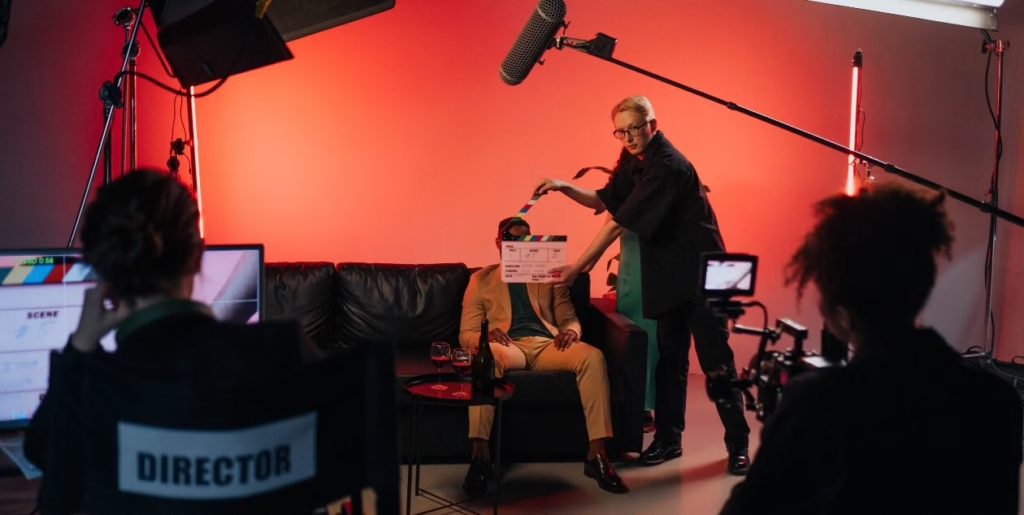
映画産業は急速に変化しています。その未来について英語で議論できるようになりましょう。
Essay: Recent Trends in Television Programming
In 2025, the landscape of television programming continues to evolve rapidly, shaped by technological innovation, shifting viewer preferences, and the ongoing expansion of streaming platforms. Several key trends define the current era of TV, reflecting both changes in how content is produced and how audiences engage with it.
1. The Dominance and Diversification of Streaming
Streaming services remain the primary driver of television consumption. Major platforms like Netflix, Apple TV+, Disney+, and Max are not only competing for global audiences but are also increasingly investing in localized content to appeal to regional tastes. This has led to a remarkable diversity in programming, with new shows spanning genres from high-budget historical dramas and sci-fi thrillers to reality competitions and animated series. The rise of Free Ad-Supported Streaming Television (FAST) channels is also notable, offering curated, linear-style programming without subscription fees, making television more accessible to value-conscious viewers.
2. Personalization and AI-Driven Recommendations
One of the most significant shifts in recent years is the rise of personalization, powered by advanced algorithms and artificial intelligence. Viewers are now accustomed to receiving highly tailored recommendations based on their viewing history, preferences, and even contextual factors like time of day or mood. This data-driven approach not only enhances user satisfaction but also helps platforms retain audiences in an increasingly crowded marketplace.
3. Hybrid Monetization and Evolving Business Models
Traditional subscription and ad-supported models are being reimagined into flexible, hybrid approaches. Many platforms now offer tiered access, allowing viewers to choose between ad-free premium subscriptions or lower-cost, ad-supported options. This diversification of revenue streams helps media companies remain competitive and resilient amid changing consumer habits.
4. Genre Experimentation and Blending
Recent television programming is marked by a willingness to experiment with genre boundaries.Shows in 2025 often blend elements of drama, comedy, science fiction, horror, and even documentary formats, resulting in innovative storytelling. For example, series like Severance (Apple TV+) combine workplace drama with psychological sci-fi, while The Studio (Apple TV+) offers a comedic, meta-commentary on Hollywood itself. Reality TV continues to thrive, with new formats and docu-series exploring real-life events and social issues.
5. Technological Advancements in Production and Distribution
The adoption of cloud-based workflows, 4K resolution, immersive audio, and real-time interactivity is transforming both the production and delivery of television content. NextGen TV (ATSC 3.0) is revitalizing over-the-air broadcasting, bringing features like targeted advertising and on-demand capabilities to traditional TV. At the same time, improvements in broadband and 5G connectivity are making high-definition streaming standard across devices and regions.
6. The Return and Reinvention of Popular Series
Another notable trend is the return of highly anticipated series after long hiatuses, such as Severance (Apple TV+), The Last of Us (Max), and The White Lotus (Max). These shows often come back with renewed creative energy, sometimes experimenting with new cast members, settings, or storytelling techniques to keep audiences engaged.
7. Focus on Localized and Inclusive Content
Streaming giants are increasingly partnering with regional studios and talent to produce content that resonates with local audiences. This includes not only language-specific programming but also stories that reflect diverse cultures and perspectives, further broadening the appeal of global platforms.
Conclusion
In summary, television programming in 2025 is more dynamic, personalized, and innovative than ever before. The convergence of streaming, AI-driven personalization, hybrid business models, and technological advancements is reshaping both what we watch and how we watch it. As genre boundaries blur and local voices gain prominence, viewers can look forward to an ever-expanding array of content that caters to every taste and interest.
7. 英語エッセイの書き方のポイント

映画に関する英語エッセイを書くための基本ポイントを解説します。
エッセイの基本構成を理解しよう
英語エッセイは「導入(Introduction)」「本文(Body)」「結論(Conclusion)」の3部構成で書くのが基本です。
- 導入: 映画の楽しみ方が多様化している現状を紹介し、テーマ(映画産業の今後)を提示します。
- 本文: 映画館(cinema)・ビデオ・配信サービス(streaming service)など、それぞれの特徴や利点、現代の視聴方法(binge-watch, on demand, subtitlesなど)について具体的に説明します。
- 結論: 今後も多様な視聴方法が共存し、映画ファンにとって良い時代が続くというまとめで締めくくります。
理由や具体例をしっかり書こう
本文では「なぜ映画館が特別なのか」「なぜ配信サービスが人気なのか」など理由や具体例を挙げて説明しましょう。
例えば:
- 映画館の良さ(大きなスクリーン、サラウンド音響、matineeやdouble featureなどのイベント)
- 配信サービスの便利さ(binge-watch, on demand, subscription, watch list, HD/4K, pause, deviceなど)
- 字幕や吹き替え(subtitles, dubbed, original version)などの多様な視聴スタイル
このように、表現を具体的な場面や自分の経験に結びつけて使うことで、説得力のあるエッセイになります。
英語学習者におすすめのポイント
- 知っている単語や表現でOK: 難しい単語を使うより、今回紹介したような基本表現をしっかり使うことが大切です。
- つなぎ言葉や段落ごとの構成: First, Also, In the future, Howeverなどのつなぎ表現を使うと、論理的で読みやすいエッセイになります。
- 自分の意見やまとめを明確に: 最後に「自分はどう思うか」「今後どうなるか」をまとめて書くことで、エッセイ全体が引き締まります。
まとめ

映画に関する英語表現は、実際の映画体験と密接に結びついています。映画館や配信サービス、視聴方法に関する表現を学ぶことで、英語での会話の幅が広がります。cinema、streaming service、binge-watch、subtitlesなどの表現は、単に言葉を覚えるだけでなく、実際の映画体験と結びつけて使うことが大切です。
映画の楽しみ方は人それぞれですが、どのような方法でも自分の体験を英語で表現できることは、グローバル社会での大きな強みとなります。
この記事で紹介した表現を使って、映画好きの外国人と会話を楽しんだり、英語でのエッセイを書いたりする練習をしてみてください。実際に使うことで、表現が自然と身につくでしょう。
あなたの映画体験をシェアしましょう!
あなたは映画館派ですか?それとも自宅視聴派ですか?この記事で紹介した英語表現を使って、あなたの映画体験を英語で表現してみましょう!

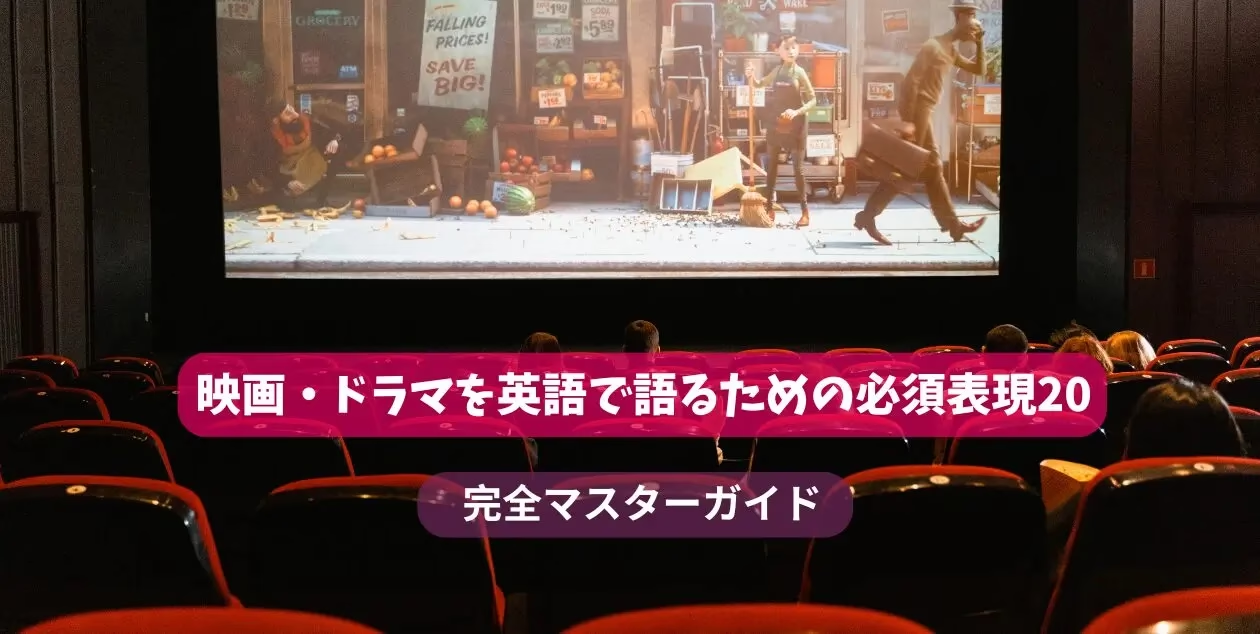




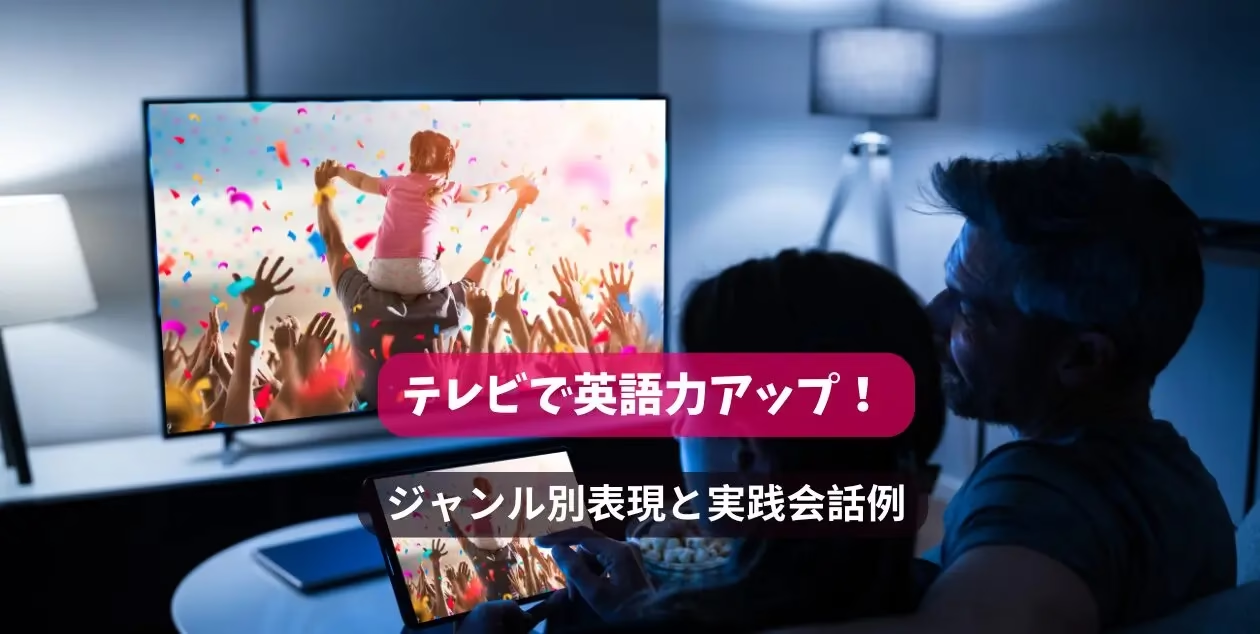



英語・英会話の基礎を学びたい方はこちらから! ↓

語彙力強化したい方はこちらから! ↓

















































